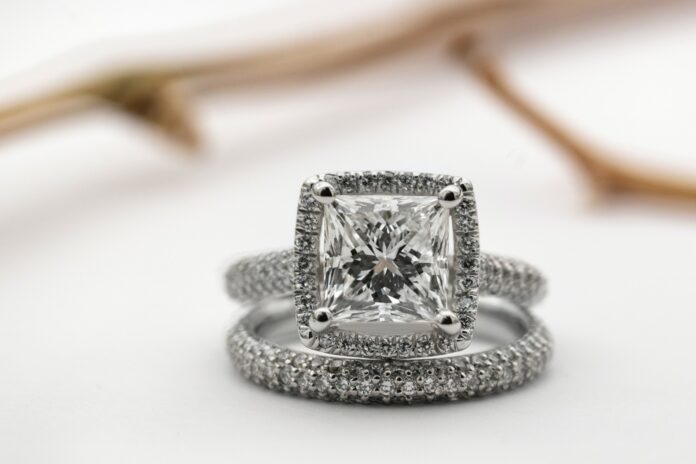Diamonds are some of the most highly coveted and treasured gemstones in the world. Whether it’s for an engagement ring, a special occasion, or simply to add to your jewelry collection, buying a diamond can be a significant investment. However, purchasing a diamond requires careful consideration and knowledge to ensure that you’re getting the best value for your money. In this article, we’ll explore some important factors to consider when buying a diamond.
Table of Contents
The Four C’s: Carat, Cut, Color, and Clarity
The four C’s are the primary characteristics that determine a diamond’s quality and value. Understanding each of these factors is crucial in making an informed decision when buying a diamond.
Carat: Carat weight is the most obvious factor that affects a diamond’s value. A carat is a unit of weight used to measure diamonds, with one carat equaling 0.2 grams. However, bigger isn’t always better. A larger diamond may have a lower quality cut or clarity, which can affect its brilliance and overall appearance.
Cut: Cut refers to the proportions, angles, and finish of the diamond. A well-cut diamond will reflect and refract light in a way that maximizes its brilliance and fire. A poorly cut diamond may appear dull and lifeless, no matter its size or clarity. The GIA (Gemological Institute of America) grades cut on a scale from Excellent to Poor.
Color: The color of a diamond is graded on a scale from D (colorless) to Z (yellow or brown). The less color a diamond has, the more valuable it is. However, subtle differences in color may not be noticeable to the untrained eye. It’s important to balance color and other factors to find a diamond that’s right for you.
Clarity: Clarity refers to the presence or absence of blemishes and inclusions within a diamond. Blemishes are surface irregularities, while inclusions are internal flaws. The GIA grades clarity on a scale from Flawless (no blemishes or inclusions visible under 10x magnification) to Included (inclusions visible to the naked eye). While clarity is important, it’s worth noting that many inclusions are invisible to the naked eye and do not affect a diamond’s beauty or durability.
Diamond Shapes
Diamonds come in a variety of shapes, including round, princess, emerald, pear, and marquise. Each shape has its own unique characteristics and appeal. Round diamonds are the most popular and classic choice for engagement rings, while other shapes may be more suitable for personal taste or a specific setting.
Diamond Certification
It’s important to purchase a diamond that has been certified by a reputable gemological laboratory. The GIA is the most widely recognized and respected diamond grading organization in the world. A diamond certified by the GIA comes with a report that provides a detailed description of the diamond’s characteristics, including the four C’s, as well as any treatments or enhancements that may have been applied.
Diamond Budget
Before shopping for a diamond, it’s important to determine your budget. Diamonds can range in price from a few hundred dollars to tens of thousands of dollars or more. However, more expensive does not always mean better. It’s important to find a diamond that meets your quality and budget requirements.
Diamond Setting
The setting of a diamond can greatly affect its appearance and overall value. A well-crafted setting will protect the diamond while showcasing its beauty. The type of metal, such as gold or platinum, and the style of the setting can also affect the price. It’s important to consider the setting when purchasing a diamond to ensure that it complements and enhances the diamond’s natural beauty.
Ethical Considerations
Diamond mining and trade have been associated with ethical issues, including human rights abuses and environmental concerns. To address these issues, the diamond industry has implemented a system known as the Kimberley Process Certification Scheme, which aims to prevent the trade of conflict diamonds, or diamonds that are mined in war zones and used to finance conflict.
In addition to the Kimberley Process, many jewelers and diamond suppliers now offer ethically sourced diamonds that are traceable to their origin and have been mined and traded in a responsible and sustainable manner. Consider asking your jeweler about their sourcing practices and whether they offer ethically sourced diamonds.
Insurance
Once you’ve purchased a diamond, it’s important to protect your investment by obtaining insurance. Many jewelers offer insurance or can refer you to a reputable insurer. Make sure to read the terms and conditions of the policy carefully and understand what is covered in the event of loss, theft, or damage.
Final Thoughts
Buying a diamond can be a daunting task, but with the right knowledge and guidance, it can also be an enjoyable and rewarding experience. Remember to consider the four C’s, diamond shape, certification, budget, setting, ethical considerations, and insurance when making your purchase.
Take your time to research and shop around to find the diamond that’s right for you. Don’t be swayed by hype or pressure from salespeople. Trust your instincts and choose a diamond that you love and will cherish for years to come.





